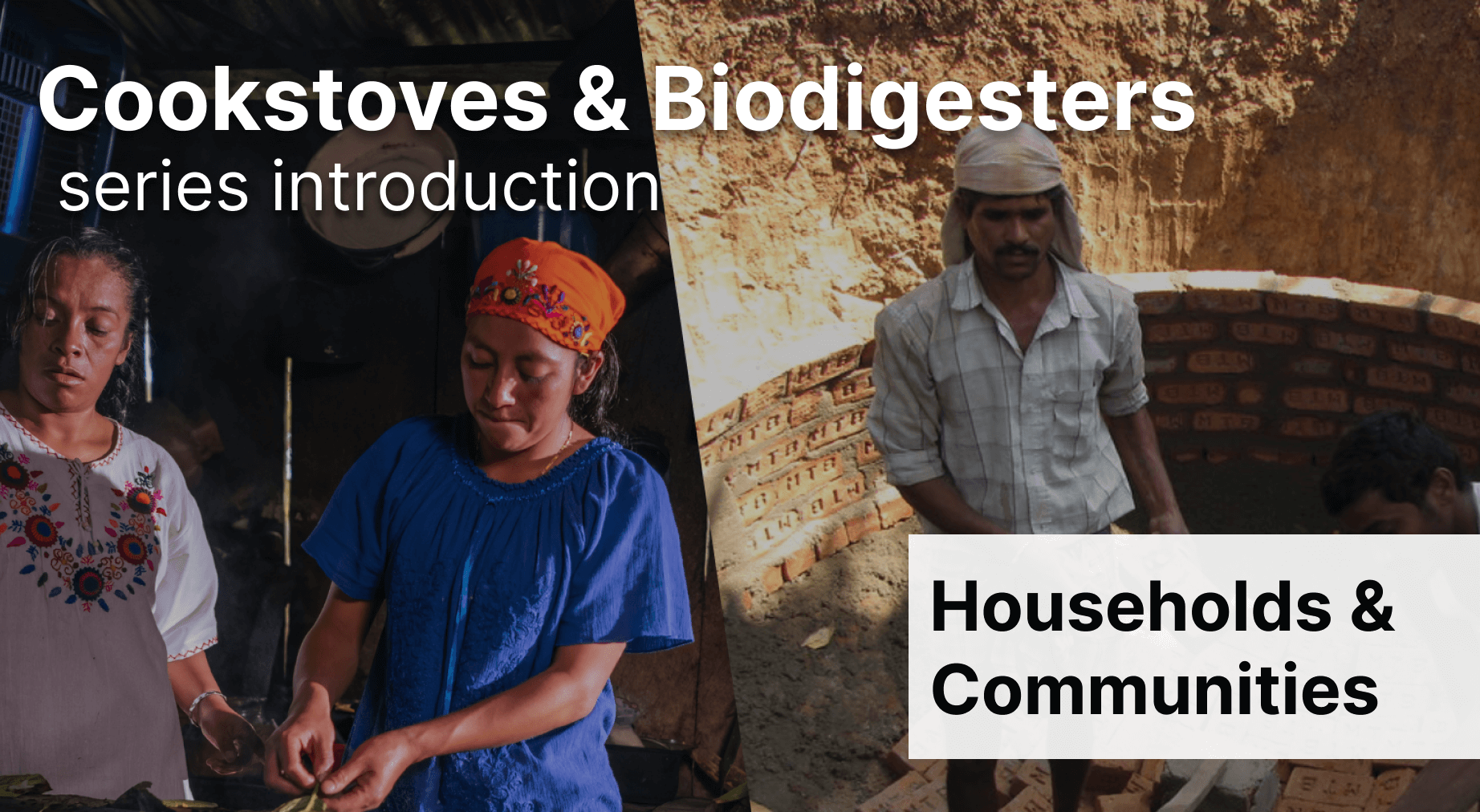
In the coming weeks, we will be releasing an informational series that aims to introduce and explain key components of cookstove and biodigester carbon projects, which reduce emissions at household and community scale. In this series, we will explore recent developments and provide insight into our analysis of the greenhouse gas (GHG) integrity of these projects.
The following table outlines these two main project types and their pathways for claiming emission reductions.
| Cookstoves (sub-divided in 2 categories) | Household Biodigesters (BDG) | |
|---|---|---|
| Improved efficiency cookstoves (ICS) Emission reductions are achieved by replacing inefficient cookstoves (e.g. open-fires) with stoves that have improved thermal efficiency. |
Fuel switch stoves (FS) Emission reductions are achieved by replacing a higher emission fuel source (e.g. non-renewable biomass) with a lower-emitting energy source (e.g. bioethanol) |
Biodigesters generate biogas from animal waste that would otherwise decay and release methane into the atmosphere, providing renewable fuel for domestic use. They have two pathways to claim emission reductions:
|
Recent trends suggest that household and community projects are increasingly popular in the Voluntary Carbon Market. From May 10 to November 1, 2023, cookstove projects were responsible for more issuances than any other project type, comprising 15.3% of total credits issued in main registries (VCS, GS, ACR and CAR). In January 2023, the Climate Focus Voluntary Carbon Market Dashboard revealed that cookstove projects represent 23% of total projects registered and 15% of the credits issued last year. To date, Calyx Global has rated 122 cookstove and biodigester projects, and we see the ongoing potential for these projects to be greenhouse gas-effective and SDG-aligned.
In our upcoming series, we will offer insight into the specificities of cookstove and biodigester carbon projects, including considerations about the fraction of non-renewable biomass (fNRB) as a key aspect that impacts the GHG integrity of these projects. Further, we will provide a deep dive into key parameters that determine a project’s rating, and explore emergent research that Calyx Global uses to inform our GHG risk assessment.
Follow us on LinkedIn, or sign up for our Newsletter below to make sure you do not miss out on our series on cookstoves and biodigesters.
Get the latest delivered to your inbox
Sign up to our newsletter for the Calyx News and Insights updates.
